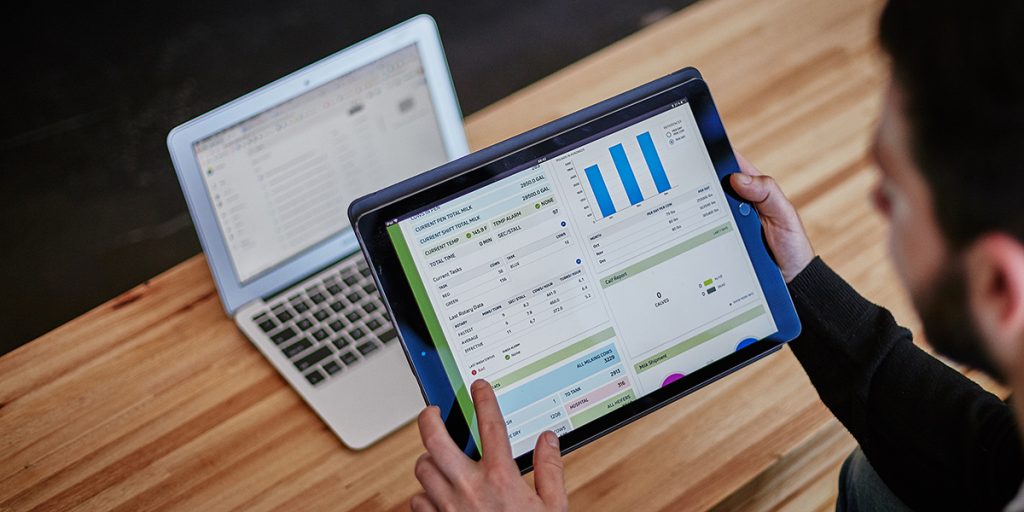If you’re a UXer, you might have noticed that this is a field that is evolving very fast. A very short time ago, the UXer’s decision-making process was heavily centered on what the designer thought was best. That has quickly morphed into a user-centered process, where more decisions are made after an MVP has been delivered and feedback has been received from the users.
We call this as a user-centered process but we can also see it through a different lens: data-driven design. In fact, being user-centered and being data-driven are part of one and the same thing, both inextricably woven into the product development process. But knowing which kind of data that should be collected is key.
What Can Data Do for Product Development?
UXers, along with everyone else on the development team, should be learning to incorporate all kinds of data into the process of developing products for their clients.
But what will that serve, exactly? Plenty. Collecting and analyzing your data the right way can actually give the team insight on which direction to aim for in their next sprint. It helps them set priorities in ways that will result in a better user experience.
But Doesn’t the User Research Process Take Care of All That?
This depends on what you call “user research”. Interviewing users as a preliminary step in the development/design process is, of course, essential. Even after just a brief conversation, designers might feel that they “know their users” in and out. As a result, some UXers might still be holding onto “ancient practices”, where they rely upon intuition to make their design/development choices.
However, there’s always the strong possibility that they can’t predict the nuances of preferences that stem from a diverse user population and their evolving needs. The attitudes, beliefs, goals, and other intricacies of human relationships with technology can never be predicted or assumed.
In addition, there’s a bubble that exists, wherein people who work in tech might all tend to form a similar set of assumptions, reinforcing one another’s beliefs and assumptions. You’ve heard of the Google Filter Bubble? This is a similar idea. Both describe a scenario where people feed on a set of pre-selected ideas that support their own preconceptions, so assumptions are made on limited, biased information.
So good, qualitative data is necessary — to understand exactly what users really need without relying upon biased assumptions.

What Does UX Data Look Like?
The idea of “data-driven” design has not completely permeated the UX world quite yet. But without data, what is there? Only theories, past experiences with other customers, and assumptions — not the stuff that the world’s greatest products are built upon.
But what does UX data look like? UX data comes in two forms: quantitative and qualitative. The best approach is to gather and analyze both types. The numbers that a team can get from quantitative data are important, but without qualitative data, it’s hard to know what those numbers mean. The two types of data support each other in a symbiotic relationship, each supplementing the other for a whole that’s larger and better than the sum of the parts.
Quantitative data gives you stats and numbers from methods like A/B testing. You can see trends over time and you can compare the numbers to similar data from other projects. But you’ll still be applying guesswork about why these numbers present themselves.
For example, you can see that there’s some churn between two steps in your checkout process. People are abandoning their carts at a certain point. But wouldn’t it be great to know why that churn is happening? Qualitative data can bring those numbers alive, transforming them into insight.
In other words, numeric data can tell you that something is happening but it won’t tell you WHY. The insight that teams can get from qualitative data, if the questions designed are correctly and the data is looked at with a trained eye, can shed light on why there’s churn, for example.
“UXers, along with everyone else on the development team, should be learning to incorporate all kinds of data into the process of developing products for their clients.”
What Kind of Qualitative Data Can Teams Collect to Make Better Products?
What does the qualitative data look like in UX? Let’s call it qualitative user research. That should give you some idea. Basically, you need to plan the questions that you’ll ask your users very carefully in order to be sure you’re obtaining the data that you need from them. Of course, it’s all going to depend on the unique needs of the users, the requirements of the stakeholders, and more.
Knowing what kind of data you need is only the first step toward collecting useful material that you’ll be able to use to make a better product.
n another example, let’s say you have quantitative data that informs you that a certain feature isn’t being used much at all. That’s good to know but you’ll want to dig deeper and find out why it’s not being used like you thought it would. That’s where qualitative comes in. Ask that question and extract answers through your next feedback loop and gather deeper knowledge and understanding about the context of use.
Quantity data will only tell that users are not interested in a specific feature… but there are chances are they can’t even find the feature, or what is worse, the feature is so unusable that they give up using it. So, you’ve got some good data that you can really use to improve your product.
Alternatively, you can use surveys to collect your qualitative data. In addition, try analyzing your App Store reviews. Some teams use playtests and concept tests. Whatever vehicle gets you the right answers and provides you with usable qualitative data… go for it.
Wrap-Up: It’s All About Making the Users’ Lives Better
Users will feel more satisfied with the product as a result of a dev process that takes into account even their most minute and seemingly insignificant preferences, which all add up to a deep, rich, and thoroughly tuned user experience. As a result, adoption rates will increase as the overall quality of the product becomes better with each set of user data that’s considered along the way.
